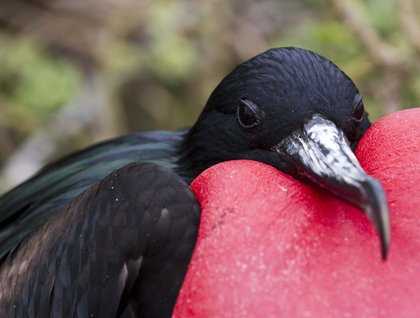At the end of our expedition, we visited Genovesa Island. This place can be considered one of the jewels of the Galápagos because of its rich wildlife. This island is one of the outermost in this archipelago and it is home to hundreds of thousands of seabirds of different kinds. Red-footed boobies are the most prominent, followed by frigatebirds.
Genovesa is very flat and it is dry at this time of the year. Because of these dry conditions, which are the result of cooler water in the region, many seabirds are nesting. Red-footed boobies and frigatebirds nest in trees, while Nazca boobies and storm petrels nest on the ground, forming enormous colonies all across the island. This massive presence of birds and their sounds give to this island a particular charm.
In the morning, some of us explored the crater cliffs from kayaks. As we advanced on our journey, we spotted red-billed tropicbirds flying in circles looking for nesting sites. These vertical cliffs are home to large colonies of swallow-tailed gulls; some of them nest here and others find shelter after their long voyages.
Later in the morning, we landed on the island to explore the shore with its colonies of great frigatebirds, Nazca boobies, red-footed boobies, and yellow-crowned night herons. From the moment we reached the shore, we were surrounded by sea birds, some on land and some in the air. A few yards from shore, we spotted the first frigatebirds with their pouches inflated. It was breathtaking to see these large birds with their red pouches on the green bushes.
In the afternoon, we landed at Prince Phillip’s Steps for a long walk. As we explored this new side of the island, we were very surprised when we spotted the first short-eared owl! Then we found more of these birds spread throughout the colony of storm petrels. Among the Nazca boobies, we found a waved albatross! This bird is the largest bird in the Galápagos and normally it is found in the south of the Galápagos – on Española Island. This sighting was a great connection with the very beginning of our trip.
It was an amazing expedition!







